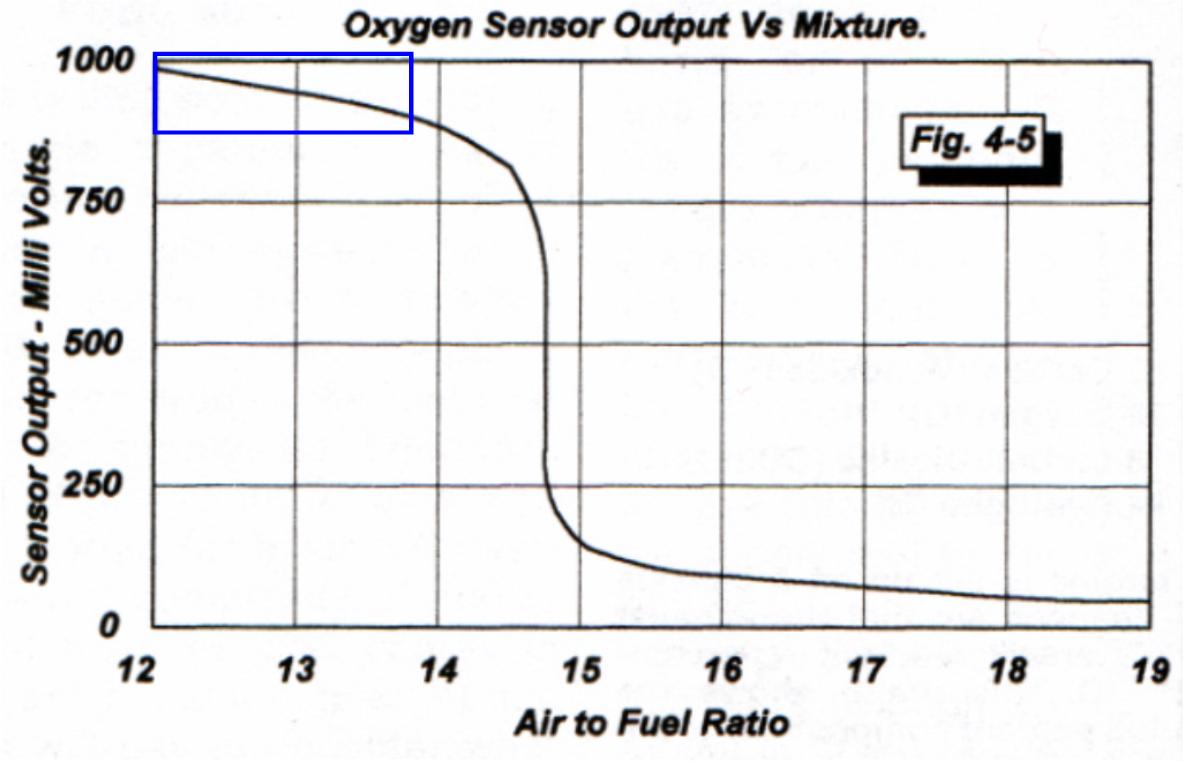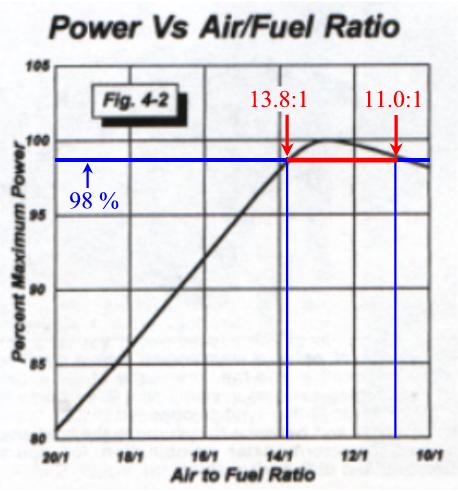
Auto Tap FAQ
Should I rely on my oxygen sensors to tell if
my car is running lean or rich?
Which
oxygen sensors are before the catalytic converters?
Which oxygen
sensors are after the catalytic converters?
What
it means to have a lean running car.
How can I tell if my car is running lean?
What it mean to have a rich
running car.
How can I tell if my car is running rich?
What air to fuel ratio
should I strive to obtain.
How do my oxygen sensors work?
How much timing does my car have?
Should I rely on my oxygen sensors to tell if my car is running lean or rich?
This topic will be debated until the end of time. A lot of people say that the pre-catalytic oxygen sensors are only good enough to show you when your car has went from a generally accepted "rich" condition to a generally accepted "lean" condition.
I just want to throw a few ideas into the pot to stir the pot a little bit. We believe they are good enough to tell you a lean condition from a rich condition. We also believe that you can realistically rely on readings from the pre-catalytic converters to show you what air/fuel ratio (in a very close proximity) you are experiencing.
We base this solely on the fact that the PCM requires feedback from the pre-catalytic oxygen sensors while the car is in "closed loop operation". This would suggest that the PCM would have to receive reliable information to keep the car running at the right air/fuel ratio to keep the car from running rich or lean. At wide open throttle this would be critical to prevent a lean condition from turning into a big disaster or making a rich condition cost you valuable horse power while fouling your spark plugs.
Which oxygen sensors are before the catalytic converters?
In auto tap your sensors that read the oxygen content in the exhaust before it enters the catalytic converters are O2B1S1 and O2B2S1.
1. O2 stands for oxygen
2. B1 stands for bank one (driver's
side of the engine)
3. B2 stands for bank two (passenger
side)
4. S1 stands for side one (the pre-catalytic converter side)
Which
oxygen sensors are after the catalytic converters?
In auto tap your sensors that read the oxygen content in the exhaust after it exits the catalytic converters are O2B1S2 and O2B2S2.
1. O2 stands for oxygen
2. B1 stands for bank one (driver's
side of the engine)
3. B2 stands for bank two (passenger
side)
4. S2 stands for side two (the
post-catalytic converter side)
What
air fuel ratio should I strive to obtain.
A big thanks goes out to Tom Deskins (onfire) for giving me the literature, his notes and commentary on this topic. Thanks a bunch Tom, we really appreciate it.
This is a major topic for debate and this small article wont change that one little bit. As we all know the 14.7:1 air/fuel ratio is the ratio of air to fuel is the best ratio for emissions; hydrocarbons (HC), carbon monoxide (CO), and oxides of nitrogen (NOx) are at their combined lowest levels.4 This might be great for emissions but how does that effect maximum horsepower? For maximum power, we are looking for an air/fuel ratio between 12.7:1 to 13:1. Usually those engines which have the manifold system delivering better mixture distribution tend to operate at a slightly leaner air/fuel ratio. But if we remove this variable from the equation, we then find the mixture ratio for maximum power is close to 13:1.4 The only exceptions to this ratio is on engines that have too much compression.
Note: The references made to the output of the pre-catalytic converter oxygen sensor readings in the following paragraphs are understood to be at wide open throttle and not during a partial throttle situation.
Look at actual test data that has been graphed and see the relationship between air/fuel ratio versus oxygen sensor output (milli-volts) (see Figure 1 below). You can see from Figure 1 below the pre-catalytic converter oxygen sensors (B1S1 & B2S1 in Auto Tap) output from 840 to 900 milli-volts will fall between 13.8:1 to 12.0:15.
Figure 15

Let's take a look at some more actual test data that has been graphed and see the connection between maximum percent power versus air/fuel ratio (see Figure 23 below). You can see that the air/fuel ratios between 13.8:1 to 11.0:1 only hurts percent maximum power by only ± 2 %.
Figure 23

We can now conclude that having your car's pre-catalytic converter oxygen sensors in the range of 840 to 900 milli-volts is acceptable. If your car produces 360 horsepower on an engine dynometer you can expect a ± 7.2 horse power variance from 840 milli-volts to 900 milli-volts.
Most people try to shoot for 880 milli-volts on their pre-catalytic converter oxygen sensors. This is around a 13.8:1 air/fuel ratio.
How do my oxygen sensors work?
Your pre-catalytic oxygen sensor reads the amount of oxygen in the exhaust. It then convert's that to a voltage and sends a signal to the PCM. The PCM reads the voltage and makes the determination of how lean (or rich) the car is running. A low oxygen reading indicates your car is running rich. A high oxygen reading indicates your car is running lean.6
What it means to have a lean running car.
Let's first understand what it means to
have a lean running car. Engineers have calculated what is known as the stoichiometric
mixture of air and fuel for our passenger cars today. The stoichiometric ratio
of the amount of air to fuel to work best is 14.7:1. This
14.7:1 ratio of air to fuel is the best ratio for emissions;
hydrocarbons
(HC), carbon monoxide (CO), and oxides of nitrogen (NOx) are at their
combined lowest levels.3
This ratio represents how many parts of air and fuel are mixed together.
So we can see that 14.7 parts of air are mixed with 1 part of fuel.
This is the best compromise for
power and cleaner exhaust for passenger cars that have to meet pollution
standards. The more air you add to the fuel the "leaner" your car's
mixture becomes. Therefore the as the ratio gets larger, i.e. 15:1, your car
runs leaner. Run extremely to lean, your combustion chambers will heat up significantly
(including your exhaust), and you will loose valuable horsepower and can
possibly cause disastrous engine damage.2
How can I tell if my car is running lean?
Monitor your O2B1S1 and O2B2S1 oxygen sensors using auto tap. Make sure your data is taken while your car is at WOT. You want your readings to be between 840 - 900 milli-volts. Most people shoot for 880 milli-volts. Anything less than the 840 milli-volts is considered lean. 830 milli-volts would be a little lean with anything in the high 700 milli-volts (i.e. 790 milli-volts) being considered lean. You would want to investigate and correct a lean condition that puts you in the high 700's or lower. A lean condition will rob you of some horsepower and begin to cause engine damage if you run to lean for to long. In the end though, you need to have a wide-band monitoring on your car to tell exactly where your car stands. Wide-band is way more accurate than your cars oxygen sensors.
What it means to have a rich running car.
Let's first understand what it means to have a rich running car. Engineer's have calculated what is known as the stoichiometric mixture of air and fuel for our passenger cars today. The stoichiometric ratio of the amount of air to fuel to work best is 14.7:1. This 14.7:1 ratio of air to fuel is the best ratio for emissions; hydrocarbons (HC), carbon monoxide (CO), and oxides of nitrogen (NOx) are at their combined lowest levels.3 This ratio represents how many parts of air and fuel are mixed together. So we can see that 14.7 parts of air are mixed with 1 part of fuel. This is the best compromise for power and cleaner exhaust for passenger cars that have to meet pollution standards. The more fuel you add to the air the "richer" your car's mixture becomes. Therefore the as the ratio gets smaller, i.e. 13:1, your car runs richer. Run extremely to rich and you will loose valuable horsepower and will foul spark plugs and cause other engine problems. Running to rich is definitely better than running to lean.
How can I tell if my car is running rich?
Monitor your O2B1S1 and O2B2S1 oxygen sensors using auto tap. Make sure your data is taken while your car is at WOT. You want your readings to be between 840 - 900 milli-volts. Most people shoot for 880 milli-volts. Anything more than the 900 milli-volts is considered rich. 930 milli-volts would be a little rich with anything in the mid 900 milli-volts (i.e. 950 milli-volts) being considered rich. You would want to investigate and correct a rich condition that puts you in the middle to high 900's or lower. A rich condition will just rob you of some horsepower. Running rich is more safe than running lean. In the end though, you need to have a wide-band monitoring on your car to tell exactly where your car stands. Wide-band is way more accurate than your cars oxygen sensors.
How much timing does my car have?
Good question. You want to monitor the Advance Timing at wide-open-throttle. LS1's differ with years and modifications but usually, your car will have between 20 - 30 degrees of timing. More timing does not necessarily mean "more power". Big stroker engines may like less timing while stock engines may want a little more timing. Again, it is one of those areas where you need to test, test, test. Either at the track or on the dyno to see what nets your car the best results. You can alter your timing with LS1Edit, a new software package that allows you to write programs to your cars pcm over and over where you control the settings.
![]()
Works Cited
1. Felder, Richard M., and Ronald W. Rousseau. Elementary Principles of Chemical Processes. 2nd Edition. John Wiley & Sons, Inc.: New York, 1986. Pages 296-297.
2. Smith, Jeff. "Fuel Injection Basics, Part One." Fuel Injection Basics. Display until 12/6/99. Page 32.
3. Vizard, David. How to Build Horsepower. Volume 2. Page 33.
4. Smith, Jeff. "Fuel Injection Basics, Part One." Fuel Injection Basics. Display until 12/6/99. Page 8.
5. Vizard, David. How to Build Horsepower. Volume 2. Page 41.
6. 4. Smith, Jeff. "Fuel Injection Basics, Part One." Fuel Injection Basics. Display until 12/6/99. Page 84.
Web Author: Eric Barger help@installuniversity.com
Copyright © 1999 - 2002 Eric Barger. All rights reserved.
Revised:
June 07, 2007
.